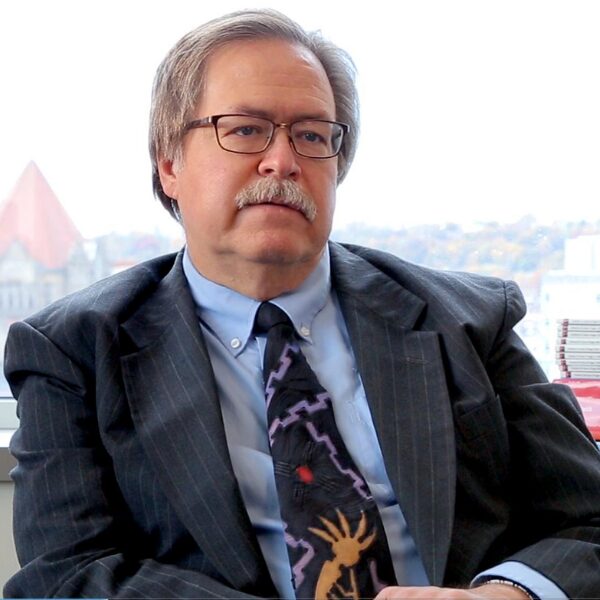Investigators
Find a Member
Results

Kelly Bailey
Program: Cancer Biology
Summary
Dr. Bailey studies pediatric sarcoma biology. Specifically, Dr. Bailey's lab focuses on understanding the intersection of DNA damage and immunobiology in Ewing sarcoma. She is involved nationally in the Children's Oncology Group Bone Tumor Committee and is national Vice Chair of the COG clinical trial AOST2121.
Christopher Bakkenist
Program: Genome Stability
Summary
Radiation therapy and many chemotherapies induce DNA damage. These therapies work because cancer cells divide more rapidly than normal cells and cancer cells acquire mutations that change their DNA damage responses and DNA repair mechanisms. Nevertheless, radiation and DNA damaging chemotherapies may not generate long-term responses as the dose of DNA damage required to kill all cancer cells may kill too many normal cells – dose limiting toxicity. The Bakkenist Lab studies how pharmacologic DNA damage response inhibitors can be used to increase the damage induced in cancer cells and…
Marija Balic
Program: Cancer Therapeutics
Summary
The main focus of my research is evaluation of technologies for circulating tumor DNA analyses and its implementation in clinical trials for metastatic and early stage breast cancer patients. Thereby the greatest challenge is hormone receptor positive disease. The technologies encompass next generation sequencing with focus on known alterations and genomic changes, but also evaluation of new approaches for understanding therapy resistance. Findings from ongoing analyses of peripheral blood of metastatic breast cancer patients under different treatment lines will hopefully lead to…
Riyue Bao
Program: Cancer Biology
Summary
Using a combination of multi-omics data integration, machine learning, and computer vision-assisted pathology image recognition, Dr. Bao’s work bridges methodological advances and biomedical applications with a direct impact on accelerating the knowledge discovery to new clinical trials that could benefit patients. Her lab focuses on the data-driven discovery of resistance mechanisms to cancer immunotherapy, with major contributions to the identification of WNT/ß-catenin activation as the first tumor-intrinsic mechanism that drives immune exclusion, commensal microbiome as the…
Parul Barry
Program: Cancer Therapeutics
Summary
Dr. Barry is interested in breast and gynecologic cancer research specifically related to precision radiation therapies to kill cancer. Dr. Barry is a board-certified radiation oncologist and an Associate Professor of Radiation Oncology at UPMC Hillman Cancer Center at UPMC Magee-Womens Hospital.
Todd Bear
Program: Biobehavioral Cancer Control
Summary
Currently I work in cancer surveillance via survey methods to investigate factors related to disparities in cancer prevention, access to treatment, quality of life, and cancer-related protective and risk factors across the lifespan. As the Director of the HCC’s Population Survey Facility, I envision collaborations with HCC members that will ultimately result in interdisciplinary work through a population health lens focusing specifically on reducing cancer related health disparities in the HCC catchment…

Jaideep Behari
Program: Cancer Epidemiology and Prevention
Summary
My research is focused on metabolic dysfunction-associated steatotic liver disease (MASLD), the most common chronic liver disease in the US, which is closely associated with obesity, Type 2 diabetes, and the metabolic syndrome. I am particularly interested in patient-centered studies on new drug development, risk stratification strategies for MASLD at the population and individual level, and approaches to decreasing risk of liver disease progression to cirrhosis and liver cancer in high-risk patient…
Juliane Beier
Program: Cancer Biology
Summary
One of the major long-term research goals of my group is to explore the mechanisms by which environmental exposures increase the risk of liver disease and cancer in experimental and translational studies. Specifically, we explore the role of vinyl chloride (VC) exposure (at concentrations below the safety regulations) in the development of hepatocellular carcinoma (HCC). Although high occupational exposures to VC can directly cause liver injury and cancer, these studies have not considered interactions of low concentrations of VC with risk-modifying factors. We have demonstrated enhanced…
Sarah Belcher
Program: Biobehavioral Cancer Control
Summary
Dr. Belcher is an Assistant Professor of Nursing with a secondary appointment in the School of Medicine. Her research focuses on understanding and improving health outcomes among patients with cancer. Her current research is examining multi-level predictors and outcomes of different phases of adherence to oral anticancer medications among patients with hematologic malignancies (R01CA292925). In addition to the National Cancer Institute, her research and training have been supported by the National Institute of Nursing Research (K23NR019296), the American Cancer Society, the Robert Wood…
Kambez Benam
Program: Cancer Biology
Summary
My lab is focused on development of human Organs-on-Chips (microphysiological systems) and bioinspired robotics in the context of lung and immune pathophysiology. I am interested in applying our Organ-on-a-Chip models to emulate cancer pathobiology preclinically and utilize these platforms for target discovery / therapeutic testing.
Wendie Berg
Program: Cancer Epidemiology and Prevention
Summary
Dr. Berg’s research interests include contrast-enhanced mammography or MRI for improved screening, comparative effectiveness of new technologies in breast imaging, and artificial intelligence to improve breast ultrasound performance. Her clinical interests include supplemental screening for breast cancer based on risk and breast density, implementing new technologies, standardizing interpretive criteria, and educating referring providers on breast density and optimal screening. Dr. Berg is the Chief Scientific Advisor for DenseBreast-info.org and holds the Bernard F. Fisher Chair for…
Andrea Berman
Program: Cancer Biology
Summary
My research focuses on understanding RNA-binding proteins direct the translation regulation of specific classes of mRNAs. To do this, we will utilize complementary biochemical, structural, and biophysical techniques.
Robert Binder
Program: Cancer Immunology and Immunotherapy
Summary
Our research interests are focused on the mechanisms of cross-priming of antigens during immune responses to cancer, viruses and autoimmunity. The pursuit of this research area stems from the observations that in many situations, heat shock proteins (HSPs) are both necessary and sufficient for cross-presentation. HSPs are adept at this because of several unique properties, including their ability to: chaperone peptides; bind to HSP receptors (CD91) for endocytosis; and stimulate immune cells to up-regulate costimulation. HSPs thus elicit remarkable immune responses specific for the peptides…
David Boone
Program: Cancer Biology
Summary
My research interest is focused on lncRNAs in breast cancer. I have strong collaborations with other members of the cancer center including Drs. Adrian Lee, Steffi Oesterreich, Partha Roy, and Uma Chandran. However, my primary role in the cancer center will be centered around training and diversity. I am the Director of the NCI (R25) and DDCF funded Hillman Academy that organizes ~70 internships to high school students annually with a special focus on training underrepresented minorities. I am also the vice chair of the education and training committee for the cancer…

Dana Bovbjerg
Program: Biobehavioral Cancer Control
Summary
Interdisciplinary studies of: biobehavioral factors in cancer; the emotional, cognitive, behavioral, and biological consequences of breast cancer risk; the contribution of biobehavioral factors to side effects of medical treatments (surgery, chemotherapy, radiotherapy) and interventions that may ameliorate those effects; interactions between psychological and genetic factors in persistent smoking behavior; and, psychological influences on cancer screening…

Erica Braverman
Program: Cancer Immunology and Immunotherapy
Summary
My research has focused on mechanisms to enhance cellular immunotherapies for cancer. My work thus far has centered on the role of AMP-activated protein kinase (AMPK) in metabolically optimizing Chimeric antigen receptor (CAR)T cells for the in vivo environment. I currently work with Dario Vignali to continue my efforts to optimize CART protocols by studying the impact of inhibitor receptors on CART function in both adult and pediatric models of cancer. I will also continue my work with AMPK and efforts towards metabolic optimization of CARTs using models of pediatric…
Miguel Brieno-Enriquez
Program: Genome Stability
Summary
Research in the Brieno-Enriquez lab focuses on the regulation of gametogenesis in human and mouse and, more specifically, the fundamental mechanisms that are required to produce viable germ cells. Our studies include the analysis of all the different stages of germs cells including primordial germ cells (PGCs), spermatocytes, oocytes, as well as how age affects them. Our long-term goal is to test our overarching hypothesis that gene expression, epigenetic clock, and chromatin structure in the naked mole-rat can be hijacked for use in other species, allowing us to regulate the…
Simone Brixius-Anderko
Program: Cancer Therapeutics
Summary
Research in my laboratory is focused on cytochrome P450 enzymes (P450), their role in human health and disease, and their potential as drug targets. While most studies focus on steroidogenic P450 enzymes as drug targets for prostate and breast cancer treatment, my goal is to evaluate the potential of targeting fatty acid metabolizing P450 enzymes for cancer therapy. I am particularly interested in the CYP4F enzyme family of fatty acid -hydroxylases which, according to our findings, are upregulated in several cancer type. CYP4F enzymes are involved in the metabolism of arachidonic acid to…
Jeffrey Brodsky
Program: Genome Stability
Summary
Our work focuses on understanding: (1) how misfolded proteins are recognized and destroyed in normal and tumor cells, (2) how molecular chaperones mediate protein quality control “decisions”, (3) how protein quality control pathways can be targeted in disease models, and (4) how cellular stress responses (such as the Unfolded Protein Response, UPR) affect protein biogenesis and homeostasis, especially in cancer. The pursuit of these goals has employed biochemical, cell biological, and genetic tools using a range of models, including yeast, cell culture, and rodents. Our early work…
Adam Brufsky
Program: Cancer Therapeutics
Summary
Dr. Brufsky's research interests include novel clinical therapeutics for breast cancer, bone-breast cancer interactions and therapeutics, molecular biology of metastatic breast cancer, and novel management strategies for metastatic breast cancer. Dr. Brufsky manages approximately 30 clinical trials investigating various aspects of breast cancer etiology and treatment. His main clinical interests are in breast cancer medical oncology with a particular interest in metastatic breast…
Tullia Bruno
Program: Cancer Immunology and Immunotherapy
Summary
Immunotherapy, specifically anti-PD1, has improved patient survival in a range of tumor types including head and neck squamous cell carcinoma (HNSCC) and non-small cell lung cancer (NSCLC). Despite the success of anti-PD1 therapy, only 20% of patients produce a durable response to this treatment. Further, there are some solid tumor types i.e. ovarian cancer, which yield very little therapeutic benefit from current standard of care immunotherapies. Thus, a need exists to develop additional therapeutic strategies to treat these patients, which includes evaluation of other tumor infiltrating…
Ronald Buckanovich
Program: Cancer Biology
Summary
Ovarian cancer is a disease that has high rates of resistance to both chemotherapy and immunotherapy. This therapeutic resistance drives a poor prognosis for patients with ovarian cancer. A primary focus of my group is to understand therapeutic resistance and develop therapeutic approaches to overcome this resistance. We are working to understand both cancer cell inherent mechanisms of therapeutic resistance and how interactions with host cells in the tumor microenvironment increase therapeutic resistance. We are currently focusing on understanding the biology of a…
Andrew Bukowinski
Program: Cancer Therapeutics
Summary
Dr. Bukowinski is an assistant professor of pediatrics at the University of Pittsburgh School of Medicine. He cares for patients with a variety of oncologic diagnoses covering the spectrum of solid tumors, leukemia, and neuro-oncology. He serves as the UPMC Children's Hospital of Pittsburgh site Primary Investigator for the Pediatric Early Phase Clinical Trials Network (PEP-CTN) for clinical trials for the Children’s Oncology…
Hailey Bulls
Program: Biobehavioral Cancer Control
Summary
The mission of my research is to improve pain management and quality of life for patients with cancer. am currently funded by the Pitt CTSI KL2 to explore stigma around prescription opioids in adults with advanced cancer, who often have high rates of moderate-to-severe pain and prescription opioid exposure. The second aim of my work is to identify patients at risk for cancer-related pain and neuropathy as early as possible in order to improve access to effective pain management resources. In addition to my own research, I collaborate closely with my mentors Dr. Yael Schenker…
Yuri Bunimovich
Program: Cancer Immunology and Immunotherapy
Summary
Dr. Bunimovich is an Associate Professor in the Departments of Dermatology and Immunology at the University of Pittsburgh and the UPMC Hillman Cancer Institute, and a faculty member of the Oncology, Immunology, Molecular Pharmacology and Cellular & Molecular Pathology graduate programs. He obtained PhD in Chemistry and Chemical Engineering from the California Institute of Technology, and MD from UCLA where he also completed postdoctoral fellowship in tumor immunology at the Crump Insitute for Molecular Imaging. Dr. Bunimovich's research program is focused on the neuroimmune…
Melissa Burgess
Program: Cancer Therapeutics
Summary
My research is focused on clinical and translational studies of soft tissue and bone sarcomas. Currently, I am investigating an immunotherapy utilizing an anti-PD1 inhibitor for patients with advanced sarcomas. In the future, I plan to further study novel immunotherapeutic approaches for advanced sarcomas, particularly with combinatorial strategies.


